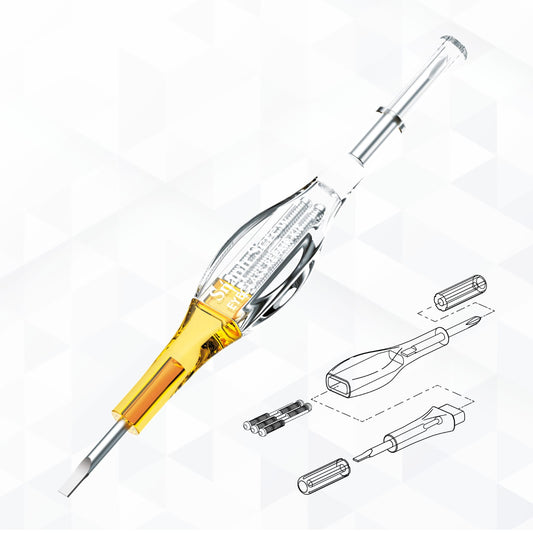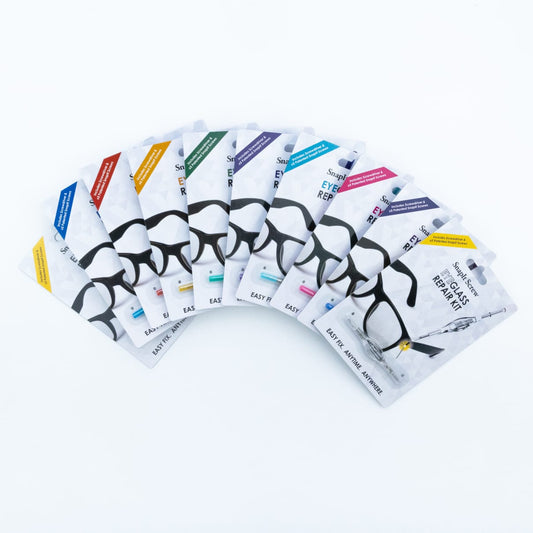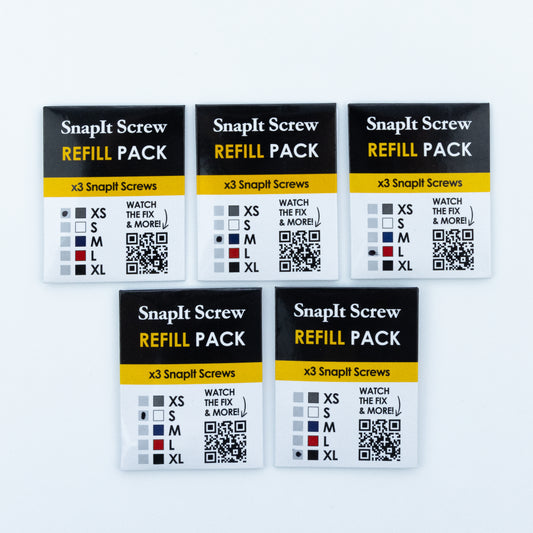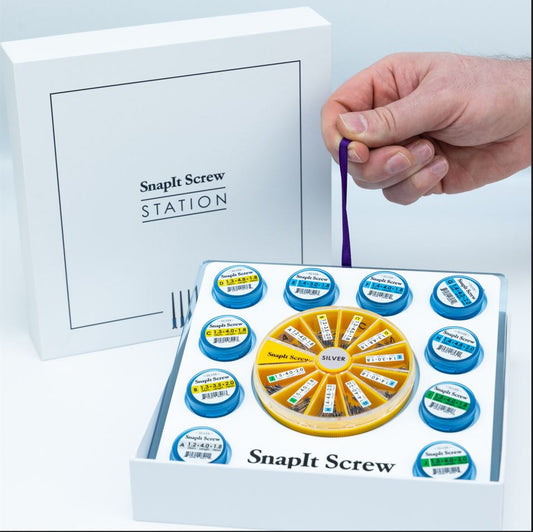Glasses are more than just a vision aid—they're a daily essential. So when something goes wrong, you want a fix fast. Thankfully, many common issues can be solved at home with a quality glasses repair kit, saving you time and money. But not every problem should be handled on your own.
In this article, we’ll break down when it’s safe to do a DIY repair and when you’re better off seeking professional help to avoid causing more damage or compromising your eyewear.
The Benefits of DIY Repairs
Using a glasses repair kit can be incredibly convenient and cost-effective. Kits like those from Snapit® are designed to make home repairs easy—even for beginners. With tools like precision screwdrivers, Snapit® screws, nose pads, and tweezers, you can quickly fix minor problems and avoid trips to the optician.
DIY repairs are great for:
- Tightening loose screws
- Replacing lost or worn nose pads
- Fixing misaligned or bent arms
- Replacing screws with Snapit® for a secure, lasting fit
- Routine maintenance and cleaning
But there’s a limit to what should be handled at home.
When It’s Safe to DIY
Here are common issues you can confidently fix yourself with a high-quality glasses repair kit:
1. Loose or Missing Screws
If your frames feel loose or a screw has fallen out, you can easily tighten or replace it. Snapit® screws are especially helpful because they align easily and hold better than standard screws.
2. Nose Pad Replacement
Nose pads wear out or fall off with use. Most frames allow for simple removal and replacement using the tools in your kit.
3. Crooked or Bent Arms
If your glasses aren’t sitting evenly on your face, you can usually realign the arms by gently bending them back into shape. This works best with metal or flexible plastic frames.
4. Cleaning and Maintenance
Regular cleaning with a microfiber cloth and lens-safe solution can be done at home. Also, checking and tightening screws periodically will extend the life of your glasses.
When to Seek Professional Help
Some repairs are best left to trained professionals—especially when precision or specialized tools are required. Trying to fix these issues yourself may result in permanent damage or void warranties.
1. Cracked or Broken Frames
If your frame is cracked, snapped, or heavily bent out of shape, it’s best to visit an optician. DIY fixes like gluing may temporarily hold things together but can weaken the frame or affect lens alignment.
2. Lens Replacement or Scratches
Installing new lenses or dealing with deep scratches requires specialized equipment and skills. Attempting to replace or polish lenses at home can lead to incorrect fit, optical distortion, or further damage.
3. Spring-Hinge Repairs
Spring hinges contain tiny internal mechanisms that are difficult to access and repair at home. For issues with spring-loaded arms, a professional repair is the safest option.
4. Complex Adjustments or Fit Issues
If your glasses constantly slide, pinch, or sit uncomfortably despite basic adjustments, it may require heat-fitting or more advanced alignment techniques that an optician can provide.
The Risk of Over-DIYing
While it’s great to be self-sufficient, knowing your limits is important. Using too much force, the wrong tools, or poor-quality screws can make things worse. Stripped threads, broken frames, or misaligned lenses may cost more to fix than the original issue.
A good rule of thumb: If you're unsure—or the repair involves anything beyond screws, pads, or minor adjustments—it’s better to consult a professional.
The Ideal Approach: A Smart Balance
Think of your glasses repair kit as your first line of defense. It empowers you to handle common issues quickly and efficiently—especially when you're traveling or can't reach a repair shop right away. Brands like Snapit® make this even easier with user-friendly tools and high-quality components.
But part of smart eyewear care is knowing when to stop and let a professional take over. Having both a reliable repair kit and a trusted optician means you’re covered for any situation.
Final Thoughts
In the world of eyewear repair, DIY and professional services both have a place. With a solid repair kit, you can manage everyday fixes and avoid unnecessary downtime. For more complicated or delicate issues, seeking expert help ensures your glasses stay in optimal shape without risking further damage.
By knowing when to DIY and when to call in the pros, you’ll save time, money, and—most importantly—your vision.
Equip Yourself with a Professional-Grade Snapit® Repair Kit
 and
and  WHEN BUY 3 KITS
WHEN BUY 3 KITS






